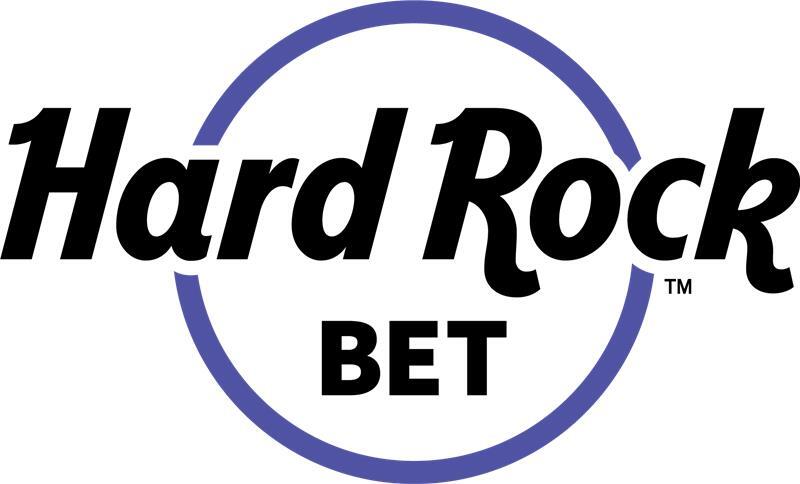Fibonacci Blackjack System
The Fibonacci blackjack staking system is a structured betting method where players increase their wager by moving one step forward in the Fibonacci number sequence…
Category Ratings
This page contains references to products from one of our advertisers. We may receive compensation when you click on links to those products. Terms apply to the offers listed on this page. For an explanation of our Affiliate Policy, visit this page.
The sequence (1, 1, 2, 3, 5, 8…) grows slowly, offering a more gradual progression than aggressive systems like Martingale, which doubles the bet after each loss.
Unlike the Martingale system, which risks reaching table limits quickly, the Fibonacci strategy aims to recover losses more steadily while reducing sharp spikes in wager size.
This appeals to many U.S. blackjack players in 2025 who prefer systems with slower escalations and better bankroll control.
While no system changes the house edge, Fibonacci’s logic-based pacing helps players manage variance more calmly, especially in longer sessions.
At a glance: Medium-high risk strategy best used on 3:2 six-deck blackjack tables that stand on soft 17, requiring a bankroll of approximately 50 betting units.
Core Principles of the Fibonacci System
The Fibonacci system follows a structured sequence to guide betting progression after wins and losses.
- Starting stake equals one betting unit (e.g., $2).
- After each loss, move one step forward in the Fibonacci sequence (1, 1, 2, 3, 5, 8, 13…).
- After a win, step back two places—or return to the base unit if you’re near the start.
- The goal is to recover all previous losses plus one unit when a win occurs.
Players typically reset the sequence after reaching a net profit or clearing the line. However, prolonged losing streaks can quickly stretch the progression and inflate bet size, so stop-loss rules are essential.
Historical & Mathematical Background
Leonardo Fibonacci, a 13th-century mathematician from Pisa, introduced the famous additive sequence where each number equals the sum of the two before it. Centuries later, gamblers adapted it into a staking method.
Despite its structure, the system doesn’t change game outcomes. In probability terms, expected value (EV) stays negative regardless of the pattern.
Formula:
EV = House Edge × Total Wagered
No betting system can override this long-term disadvantage.
To explore more about the game’s origins, visit our full guide on blackjack.
Table Requirements and Optimal US Setup
The Fibonacci blackjack system works best on:
- Blackjack tables with 3:2 payouts and dealer standing on soft 17—a more favorable player setup.
- Table limits starting at $5, with enough space for at least 15 progression steps (around $200–$500 max).
- Live dealer games (e.g., Evolution, Playtech) offer realistic conditions, while RNG tables are ideal for practice.
U.S. regulations allow betting progression systems, and operators do not alter odds based on betting patterns.
Step-by-Step Walk-Through With Annotated Bet Tracker
Here’s a six-hand example using the Fibonacci blackjack system with a $2 base unit. This scenario reflects a typical three-loss, two-win recovery cycle.
| Hand | Stake | Outcome | Balance |
| 1 | $2 | Loss | -$2 |
| 2 | $2 | Loss | -$4 |
| 3 | $4 | Loss | -$8 |
| 4 | $6 | Win | -$2 |
| 5 | $2 | Win | $0 |
| 6 | $2 | — | — |
How to Play Blackjack With a Bonus at a US-Licensed Casino
1. Pick a Reputable US-Licensed Site
Scroll to the footer of the casino homepage and confirm a valid license from a state regulator (e.g., NJDGE, PGCB, MGCB). Avoid offshore sites lacking state oversight.

2. Register Your Account
Provide personal details (name, DOB, email, address). Upload a copy of your government-issued ID and proof of address if prompted, as part of KYC (Know Your Customer) checks.

3. Opt in to a No-Wagering Bonus (If possible)
Go to the promotions page and look for a blackjack-friendly bonus with no wagering. Ensure the offer explicitly states that it is a 100% game contribution. If not available, review other offers for premium incentives.
4. Deposit via an Accepted US Payment Method
Use a debit card, PayPal, prepaid card, or e-wallet that qualifies for the promotion. Some casinos exclude certain payment methods, so be sure to read the bonus terms carefully.

5. Activate the Bonus
Bonuses may apply automatically or require a promo code. Once active, you can withdraw bonus winnings without rollover.
By following these steps, you’ll be able to start using the Fibonacci system with bonus funds on fair, regulated casino games.
Bankroll Planning & Stop-Loss Rules
A minimum of 50 betting units is recommended to run the Fibonacci system safely.
- Example:
- Base unit = $2
- Recommended bankroll = 50 × $2 = $100
- Set strict session limits to manage risk and avoid chasing losses:
Stop loss: 25 units (e.g., $50)
Stop win: 10 units (e.g., $20)
Stick to these caps without exception to maintain control and protect your bankroll.
Variations & Tweaks Used by Seasoned US Players
Experienced US blackjack players use variations of the Fibonacci system or tweak certain elements to try a different strategy. Below are a few examples of how you can apply this method.
Reverse Fibonacci
How it works: Increase your stake after each win and decrease it after a loss.
Pros: Can extend win streaks; lower drawdowns in losing runs.
Cons: Risk of chasing wins; doesn’t recover losses effectively.
Best for: Casual mobile play with small stakes (e.g., $1 tables).
Half Unit Fibonacci
How it works: Same sequence, but in 0.5-unit increments (e.g., $0.50, $0.50, $1.00…).
Pros: Slower bankroll usage, ideal for extended sessions.
Cons: Requires more steps to recover losses.
Best for: Low-stakes online or mobile sessions where longevity is a priority.
Tiered Reset
How it works: After two or more wins, reset the sequence to half the highest stake reached.
Pros: Helps protect profits and reduce exposure.
Cons: Slower to recoup losses; needs discipline to execute.
Best for: High-limit tables ($100+)
How Does Fibonacci Compare With Other Systems?
The Fibonacci system is slower-paced than many betting strategies, making it a popular choice for players who prefer longer sessions and gradual progression. Here’s how it stacks up against other common blackjack systems:
Fibonacci vs. Martingale
Martingale doubles the stake after each loss, while Fibonacci increases gradually. Martingale recovers losses in a single win but hits table limits faster. Fibonacci is safer but takes longer to break even.
Fibonacci vs. D’Alembert
D’Alembert adjusts by one unit after each win or loss. It’s simpler than Fibonacci and more conservative but recovers losses even more slowly.
Fibonacci vs. Labouchere
Labouchere requires managing a number line and adjusting stakes based on totals. It’s more complex and flexible than Fibonacci but riskier during long loss streaks.
Fibonacci vs. Oscar’s Grind
Oscar’s Grind only increases bets after wins and aims to lock in a 1-unit profit per cycle. It’s slower and more cautious than Fibonacci.
Comparison Table
| System | Risk Level | Growth Rate | Complexity | Bust Risk | Recovery Speed |
| Fibonacci | Medium | Moderate | Easy | Medium | Steady |
| Martingale | High | Fast | Very Easy | High | Fast |
| D’Alembert | Low | Slow | Very Easy | Low | Slow |
| Labouchere | Medium-High | Fast | Complex | Medium | Fast |
| Oscar’s Grind | Low | Very Slow | Moderate | Low | Very Slow |
Ideal US Casinos & Live Studios to Practice
Utilize low-limit games or demo mode to practice the Fibonacci blackjack system. Below are the top-rated US online casinos to consider.
1. BetMGM Casino
BetMGM features single-zero European roulette and live blackjack with 3:2 payouts on S17 tables. Bets start at $0.50, with a cap of around $2,000. Evolution powers its live games, providing reliable performance on both mobile and desktop devices.
2. Caesars Casino
Caesars provides European roulette and S17 blackjack with 3:2 odds. Table limits average $1 to $5,000, with high-quality live dealer streams by Evolution. The platform works smoothly on mobile for Fibonacci testing.
3. FanDuel Casino
FanDuel features single-zero roulette and a mix of S17/H17 blackjack tables. Limits average $1 and go up to $3,000. Evolution’s studio ensures high-quality streams and responsive mobile support for on-the-go sessions.
Explore more at the Live Casino hub.
Common Misconceptions & Pitfalls
Many players mistakenly believe that “wins must balance losses eventually,” but in reality, each blackjack hand is independent, and the house edge persists over time. Similarly, no betting progression—including Fibonacci—can overcome this edge.
Key pitfalls to avoid:
- Increasing the base unit mid-shoe, which compounds risk.
- Boredom tilt after long sequences of small losses or pushes.
- Skipping stop-loss rules, often leading to bigger bankroll damage.
Discipline—not belief in streak correction—is critical.
Tips & Tricks for Getting Started with Fibonacci
- Master basic blackjack strategy before adding Fibonacci to avoid compounding poor decisions.
- Track every hand in a session log to stay accountable and recognize patterns.
- Avoid side bets like Perfect Pairs or 21+3—they carry high house edges and disrupt progressions.
- Practice in demo mode first to build confidence without risking real money.
- Only move to real money once your practice logs show consistent discipline and bankroll control.
- Set deposit limits with your casino account to manage risk.
- Look for cashback promotions to help offset variance—these reduce net losses over time if used wisely.
Other Applications of Fibonacci
The Fibonacci progression isn’t limited to blackjack—it’s also commonly used in roulette, especially on even-money bets like red/black or odd/even. In roulette, the structure mirrors that of blackjack: increase by one step after a loss, and move back two steps after a win.
Players appreciate its slower climb compared to Martingale. For a full breakdown of how it applies at the wheel, see our Fibonacci Roulette guide.
Responsible Gaming
Responsible gambling means playing for fun, not as a way to make money. U.S. casinos offer tools such as deposit caps, session timers, and self-exclusion options to help players stay in control.
Setting daily or weekly limits prevents overspending, while reality checks remind you how long you’ve been playing. If needed, you can take a cool-off break or use self-exclusion to block access for a longer period.
Never bet more than you can afford to lose, and avoid chasing losses. Understanding odds and sticking to a set budget are key steps toward safer play.
For support, visit our Responsible Gaming Page or contact U.S. resources, such as the National Council on Problem Gambling and 1-800-GAMBLER, which offer free, confidential help nationwide.
Main Takeaways
The Fibonacci Blackjack System offers a structured and conservative approach to betting, based on the famous numerical sequence where each number equals the sum of the two before it. Players increase their stake by one step in the sequence after a loss and move back two steps after a win.
This method helps recover losses gradually. Unlike Martingale, which doubles stakes aggressively, Fibonacci increases bets more moderately.
As opposed to other systems, Fibonacci’s slower progression appeals to players who prefer control and longevity in their sessions.
It doesn’t promise profits or reduce the house edge—statistically, the house always has the advantage—but it can help players manage their bankrolls more steadily and avoid dramatic swings.
For optimal results, the strategy should be applied at tables offering 3:2 payouts, where the dealer stands on a soft 17.
A recommended starting bankroll is around 50 betting units, which allows for absorbing short losing streaks without hitting table limits.
You can apply this system to both live dealer games and RNG tables for practice.
Summary Points:
- Additive betting progression: +1 after loss, -2 after win
- Slower than Martingale, more structured than flat betting
- Best on 3:2 S17 tables; bankroll ≈ 50 units
- Doesn’t beat the house edge
- Discipline and stop-loss rules are essential
FAQs:
What is the basic staking rule in the Fibonacci system?
You increase your bet one step forward in the Fibonacci sequence after a loss and move two steps back after a win.
How many betting units should I start with for a low-risk session?
Start with at least 50 betting units to absorb typical losing streaks.
Does the system work better on S17 or H17 blackjack tables?
S17 tables are better because they slightly reduce the house edge.
How is Reverse Fibonacci different from the standard progression?
Reverse Fibonacci increases bets after wins and decreases after losses, aiming to ride winning streaks.
What happens if I reach the table’s maximum stake without a win?
You can’t continue the sequence, and losses are locked in.
Can Fibonacci be combined with cashback or loss rebate promos?
Yes, cashback can help soften the variance in losing runs.
Is this system suitable for multiplier variants, such as Lightning Blackjack?
No, the unpredictable payouts in multiplier games disrupt the system’s structure.
Do US online casinos allow auto bet scripting for Fibonacci sequences?
Most US online casinos do not permit auto-bet scripting.
Will using Fibonacci breach bonus max bet or game weighting rules?
Yes, it may breach max bet clauses or contribute poorly to wagering.
How do I decide when to reset the sequence or quit the session?
Reset after a full recovery or stop when you reach your profit or loss threshold.
Does long-term Fibonacci play alter the house edge?
No, the house edge remains unchanged regardless of betting pattern.
For almost two decades, Sadonna has remained at the forefront of the gambling industry in the US and abroad, covering the latest news and legal updates. Sadonna’s goal is to provide sports bettors and casino players with premium content, including comprehensive details on the US industry.













